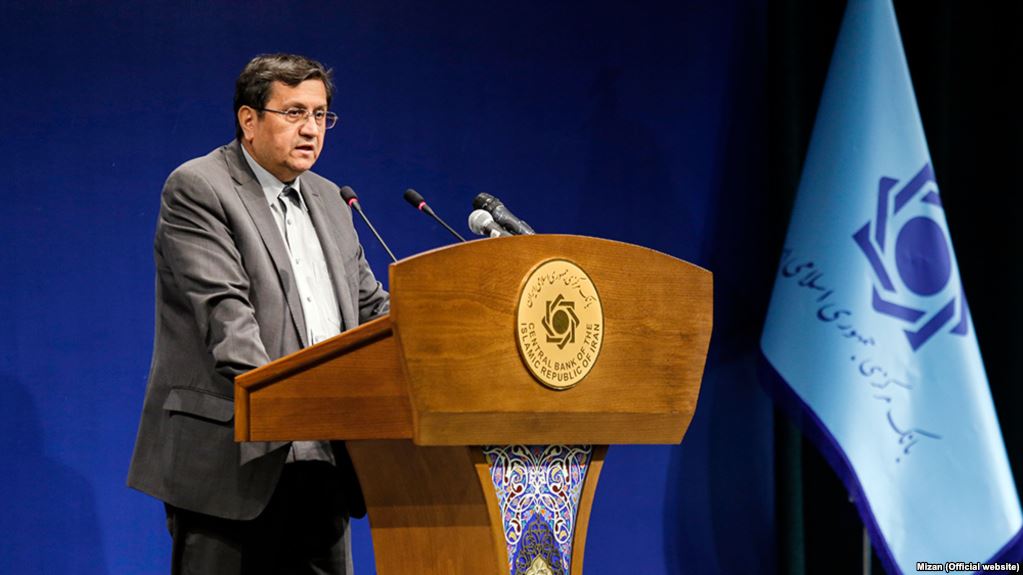UPDATE 1300 GMT: The Iranian rial has fallen about 8% on Sunday, and is close to the all-time low that it reached in July.
The rial started at 109,500:1 vs. the US dollar, but now is at 117,500:1 after dropping steadily through the day.
The currency reached a low point of 119,000:1 before Government measures brought a short-lived respite in its decline.
Meanwhile, the Iranian Parliament’s Research Center is forecasting a sharp downturn into recession.
The Center is projecting a recession with a GDP loss of between 3.8% and 5.5% in the next Iranian year from March 2019.
Iran’s economy grew 3.7% between March 2017 and March 2018.
In the less pessimistic scenario, the European Union cooperates with Iran despite US sanctions. Iran’s current oil exports of just over 2.1 million barrels per day fall by about 500,000 bpd. There is a 22% fall in vehicle manufacturing, a 2% to 5% drop in other industries, and metals and a 9% drop in imports.
Under the more pessimistic scenario, oil exports fall by almost half, with a 1 million bpd decline. There is a 45% drop in vehicle manufacturing, a 5% reduction in other industries, and an 18% drop in imports.
The head of Iran’s Central Bank has said that foreign reserves will not be used to prop up the collapsing currency.
Abdolnasser Hemmati, the new chief of the Central Bank, said on Saturday that reserves are the Islamic Republic’s “honor” and should not be used in “an economic war” with the US.
The statement complemented President Hassan Rouhani’s answer to MPs, in questioning last week, that he has ordered the Central Bank not to use oil revenues to support the Iranian rial.
The rial has fallen 60% this year against the US dollar, including 35% in a single weekend in July. At 45,000:1 in January — already a historic low — it sank to 119,000:1 before a series of Government measures and arrests of “economic corruptors” last month.
The rial briefly recovered to 95,000:1 but is falling again. On Sunday morning, it is at 114,000:1.
The Iranian economy is in crisis from a combination of long-term internal problems and expanding US sanctions. Production, investment, and trade are falling, and inflation — brought down by the Rouhani Government from more than 40% to single digits — is rising again, in part because of the currency devaluation.
President Rouhani is under pressure from hardliners over the crisis. He replaced the Central Bank head with Hemmati last month, and MPs have dismissed the Labor and Economy Ministers in recent weeks.
Hemmati said yesterday, “We should not live like rich kids” and use oil income to support the exchange rate. He hoped that non-oil revenues could provide relief.
The Central Bank head blamed the rial’s difficulties on “imbalance” in the banking sector and oversupply of money in the economy.
Trials of “Economic Corruptors” Begin
The regime has begun trials of “economic corruptors”, whom it blames — along with the foreign “enemy” — for the crisis.
A hearing for 13 managing directors began on Saturday in a special Tehran Revolutionary Court, set up by judiciary head Sadeq Larijani and approved by the Supreme Leader last month.
The directors are charged with importing mobile phones at the subsidized official exchange rate and then selling them at the much-higher open market rate.
The regime prosecutor said eight of the suspects made a profit of up to 1.3 trillion rials (about $31 million).
Last week, three other suspects were charged with similar crimes.
Revolutionary Court hearings are normally behind closed doors, but Larijani and the Supreme Court have ordered publicity for these proceeding. Ayatollah Khamenei has also commanded that there will be no appeals, except where the death penalty is imposed — punishments will be “carried out swiftly and justly”.
The former deputy head of the Central Bank is among those who have been arrested.

